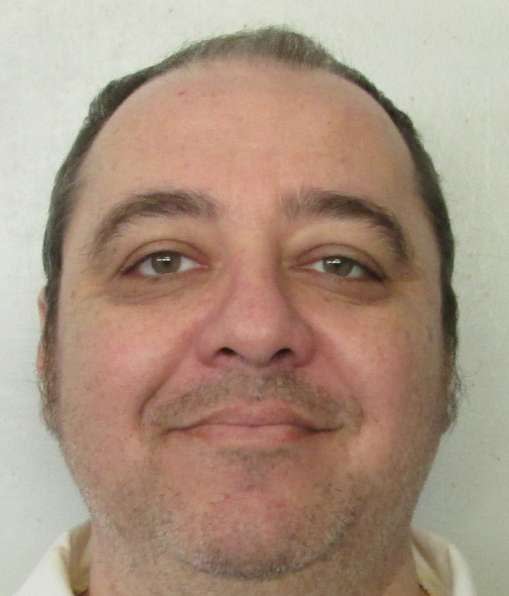Alabama preps for nitrogen gas execution: Here's how it would work
With its recent history of botched attempts, Alabama's next scheduled execution is expected to bring national and even international attention. It's never been used in the United States.
Gov. Kay Ivey has announced a Jan. 25 execution date for Kenneth Eugene Smith using the new method of nitrogen hypoxia. Smith was one of two men convicted in the 1988 murder-for-hire slaying of Elizabeth Sennett in northwestern Alabama.
The state tried but failed to execute Smith by lethal injection last year. The Alabama Department of Corrections halted the process when the execution team could not get the required two intravenous lines connected to Smith.
Nitrogen makes up 78% of the air inhaled by humans and is harmless when inhaled with proper levels of oxygen. The only description DOC has given of the process is in a heavily redacted court document.
Under the proposed procedures, a mask would be placed over the inmate’s nose and mouth and their breathing air would be replaced with nitrogen, depriving them of the oxygen needed to stay alive. The nitrogen “will be administered for 15 minutes or five minutes following a flatline indication on the EKG, whichever is longer,” according to the execution protocol

The DOC has not commented on whether condemned inmates using the nitrogen gas system would be sedated before the gas is administered.
Prosecutors say Smith was one of two men who were each paid $1,000 to kill Sennett on behalf of her pastor husband, who was deeply in debt and wanted to collect on insurance. Her husband died by suicide a week later. The other man convicted in the slaying, John Forrest Parker, 42, was executed by lethal injection in June 2010.
The execution of Casey McWhorter
On Nov. 16, Alabama executed a man who had been on death row for 30 years. Casey A. McWhorter died where he had spent most of his adult life, in prison.
McWhorter, 49, was executed by lethal injection in the death chamber of the William C. Holman Correctional Facility in Atmore. He was convicted of capital murder in 1994 in connection with a 1993 Marshall County robbery and homicide. McWhorter had reached his 18 birthday three months before the crime. He was convicted of capital murder and sent to death row when he was 19.
There he stayed for 30 years. His execution was carried out using a team and a process the state had recently revised but has not fully revealed the public. Here's what witnesses saw.
The drapes of the media witness room were opened at 6:30 p.m. McWhorter was laying in a bed partially covered by a tightly drawn white sheet. His head and torso were slightly elevated. He was laying cruciform, with both arms facing palm up. Restraints for his body were on top of the sheet. Two IV lines came from a small window in the back wall of the death chamber. One appeared to enter his right arm near the inside of his elbow, and the other appeared to enter his left arm at the inside of his left elbow.
At 6:39 p.m. he appeared to stop breathing.
His spiritual advisor made the sign of the cross.
A few minutes after a corrections officer inside the death chamber bent to McWhorter’s ear and loudly called his name, the officer then touched his face and pinched the inside of his right arm.
At 6:47 p.m. the drapes to the media witness room were drawn.
McWhorter’s official time of death was given as 6:56 p.m.
The process went smoothly, state officials said after the execution was completed. John Q. Hamm, director of ADOC, addressed media after the execution. The execution team needed two attempts to gain access to McWhorter’s veins for the two IV lines needed to deliver the deadly cocktail.
Failed execution attempts
In 2022 two attempts at execution were canceled when access to the veins of two condemned inmates could not be accessed before the death warrant ran out. Another execution was delayed several hours as the execution team worked to access the condemned man's veins.
In the wake of those problems Gov. Kay Ivey put a halt on executions and called for a “top to bottom review” of the process.
Protocol changes included the governor’s office giving additional time for the execution to be conducted, 30 hours in place of the more traditional 24 hours. The time was added to give the execution team more time to access the veins of the condemned if needed. It also called for a new execution team to be formed. DOC has been tightlipped about the makeup of the team and even what compounds are used in executions.
The new protocols were tested in July with the execution of James Barber, 64, by lethal injection. In that execution the team took three “sticks” to access two veins over a period of about six minutes, Hamm said then.
The Associated Press contributed to this report. Contact Montgomery Advertiser reporter Marty Roney at mroney@gannett.com.
This article originally appeared on Montgomery Advertiser: Alabama preps for nitrogen gas execution: Here's how it would work
